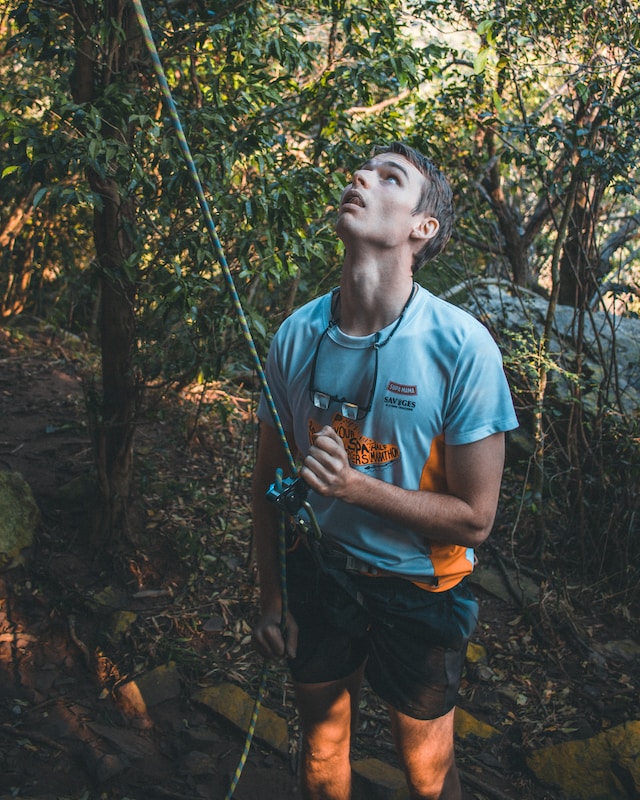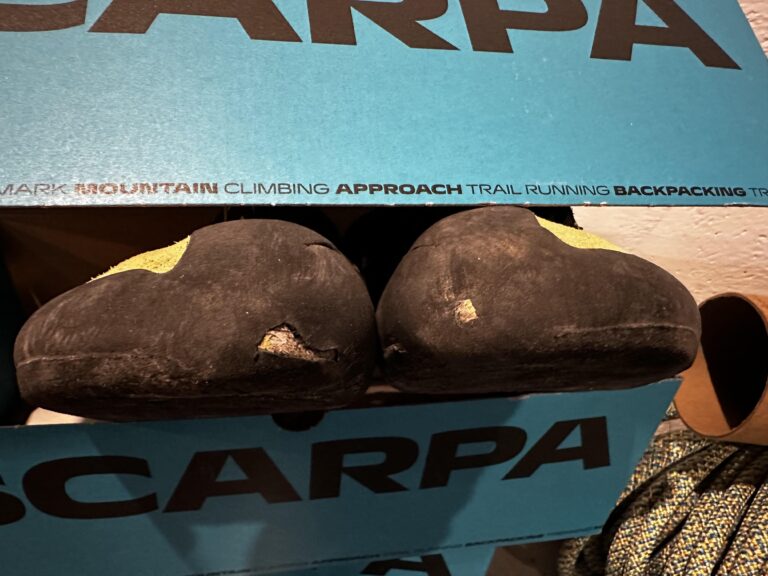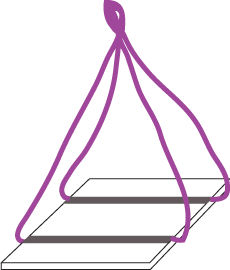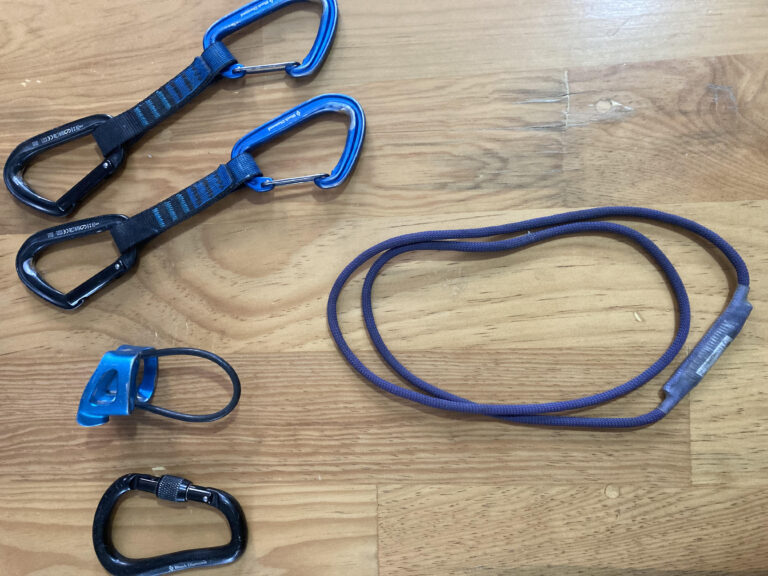Slab Climbing: Up Your Game In 2024
Last Updated on: 23rd April 2024, 11:34 am
Slab climbing is polarizing among climbers. The majority of folks I climb with hate it. After all, slabs often equal rough falls, bad holds, and lots of run out between clips. But some climbers out there love it for the technical, balancy style that slab climbing requires.
Regardless of how you feel, slab climbing isn’t something you can always avoid. Often times amazing routes will start or end with slabs forcing you to give them a go at some point. This can be especially true on multi-pitches where hours of incredible climbing are guarded by long sections of gently sloped slab (like the El Cap Nose).
Whether you love it or hate it, every climber should know the basics of slab climbing. And at the Undercling, we have all the beta you need to slay the slab.
Table of Contents
- What is slab climbing?
- Why is slab climbing hard?
- Slab vs overhang
- Slab vs overhang: which is harder?
- Slab bouldering
- Famous slab climbers
- Technique for climbing slab: 5 Pro Tips
- Epic slab climbs around the world
- Slab climbing wrap-up
What is slab climbing?
Slab climbing is a type of climbing that involves ascending angled rock faces that can be smooth and offer very few features or holds. Slab climbs require careful footwork and balance as opposed to brute strength. The angle of the rock surface can vary, but is always less than 90 degrees — that is the magic number that determines what is slab climbing, and what is vertical or overhung.
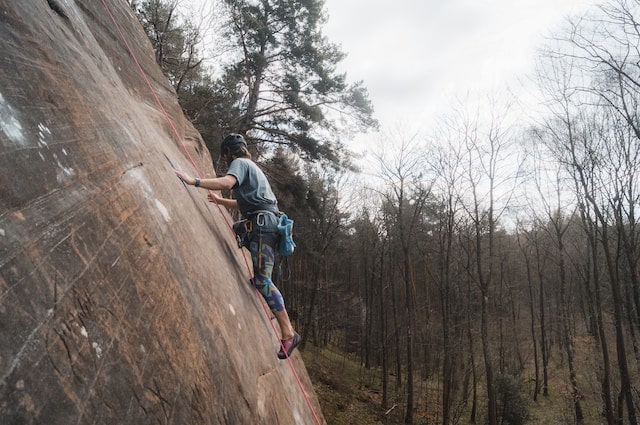
Slabs can be found on both sport and trad routes across all different rock types. Depending on the angle, the holds, and for trad climbing the difficulty of placing protection, route difficulty can vary from beginner to incredibly hard.
Why is slab climbing hard?
For starters, it’s not fair to say that slab climbing is hard. Like anything in climbing, it’s objective and some people will find it easier than others. The reason that slab climbing has a rep for being hard can be traced back to a few things.
For starters, it can be heady and offers a bigger mental challenge. Slab climbs are often really run out — meaning that bolts are spaced further apart from each other. Even when the climbing is easy, it can require a stronger head game to keep focus and not get spooked. The other scary thing about slab is that the falls can hurt. Because of its angle, you will hit the rock sooner in case of a fall which can lead to scraped knees and hard impact on your ankles.
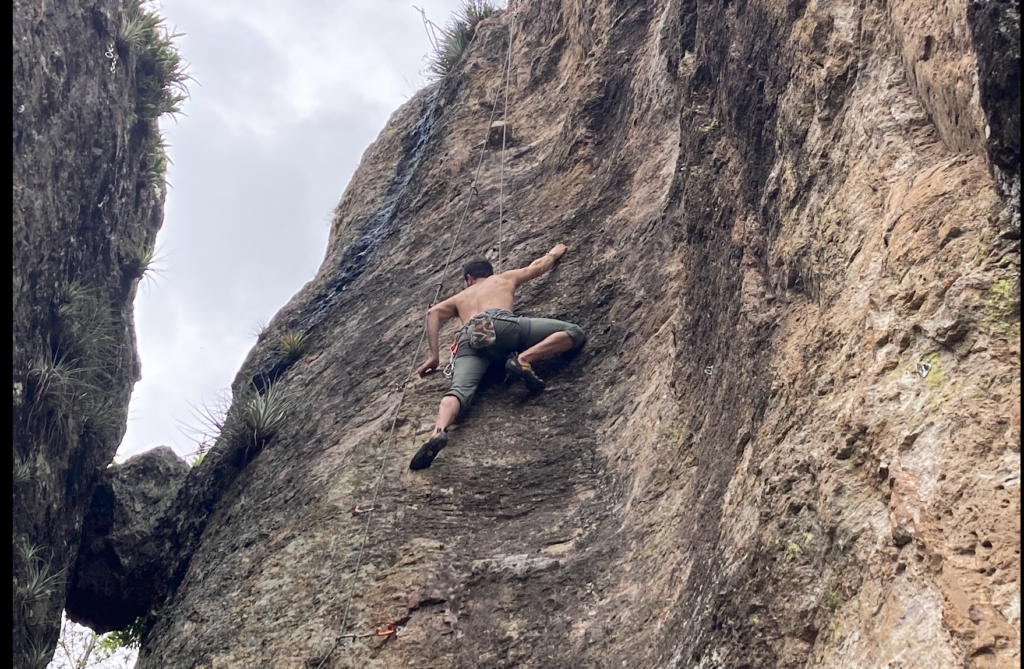
As we mentioned, climbing slab make people rely more on their feet than their hands. This can be especially difficult for beginner climbers that will often rely more on their upper body rather than using their legs. Climbers that are better with their feet, balance, and using body tension tend to have an easier time climbing slab, but these are all skills developed over time.
Slab vs overhang
Slabs and overhangs are opposites. A slab is a section of rock in which the bottom part sticks out below the top part; the rock is less than 90 degrees. An overhang is a section of rock in which the top part sticks out over the bottom part; the rock angle is above 90 degrees.

Slab vs overhang: which is harder?
Whether you find slab or overhang harder is completely dependent on the climber and what style feels most natural to them. However, most climbers will find slab easier because the angle of the rock creates natural friction. Occasionally slab with be really smooth and featureless — in these cases juggy overhangs can make for easier climbs even if they require more strength. The slab vs overhang debate is an old one among climbers, and not one I expect will be resolved anytime soon.
Slab bouldering
Slab isn’t just reserved for sport climbing. In fact, one of the most likely places you’ll encounter slab outdoors is topping out on boulders. The techniques that we outlined above work well both on sport routes and while bouldering slab. If you’re like me, the last couple slab moves of a route can be a bit intimidating since you know you’re close to the top and don’t want to blow your send. Make sure to keep breathing and keep your head in it until you top out!
What is a slab bouldering?
All this refers to is a specific boulder problem that is on slab. Often times gyms will have entire walls dedicated to slab problems for climbers to work their skills on. Outdoors, slab problems generally mean a problem is mainly slab. Often times you’ll find parts of a boulder that involve a little slab climbing (especially top outs) but they are usually only referred to as slab problems when most of the route is slab.
Famous slab climbers
Spoiler alert, there aren’t many. Climbing slab tends to be a necessary evil for climbers — like climbing a section of slab to enjoy a much better part of a route. Not many individuals seek it out, but there are exceptions.
Anna Hazlett, or Anna Hazelnutt as she calls herself on Instagram, has made a name for herself as an expert climbing some of the world’s gnarliest slab routes. She even has a little e-commerce store selling stickers and crop-tops with the slogan she’s coined “Slab is Sexy.” She often shares slab tips on her instagram, so make sure to give it a follow.
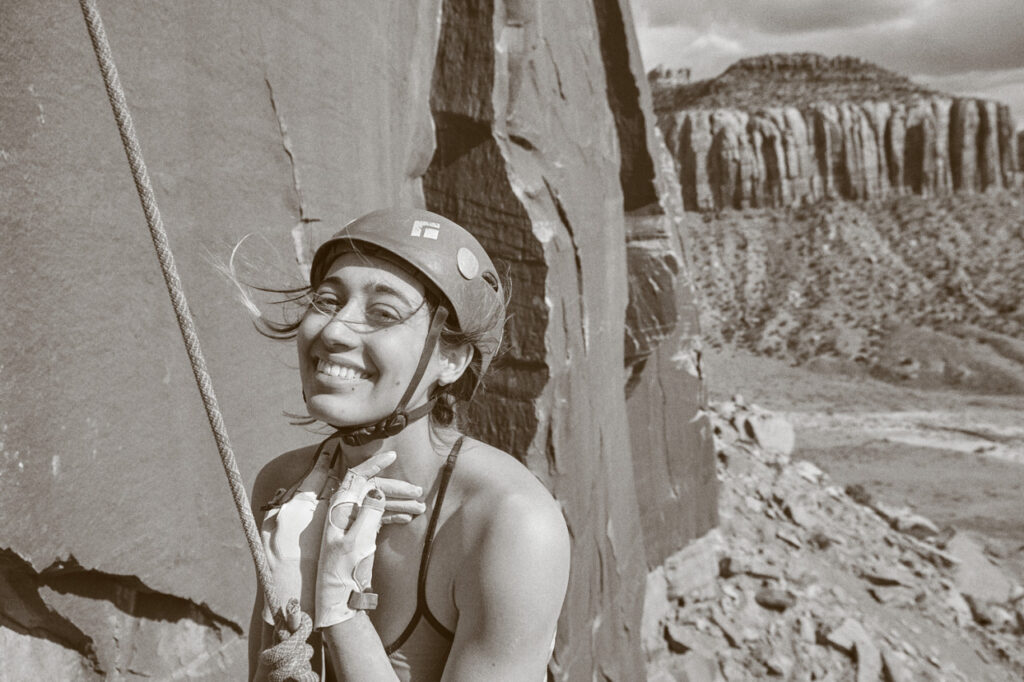
Technique for climbing slab: 5 Pro Tips
The name of the game with slab is feet. Most of the time when folks are struggling, it is because they are having a hard time getting their feet into the right position or trusting that the small holds and smears will hold their weight.
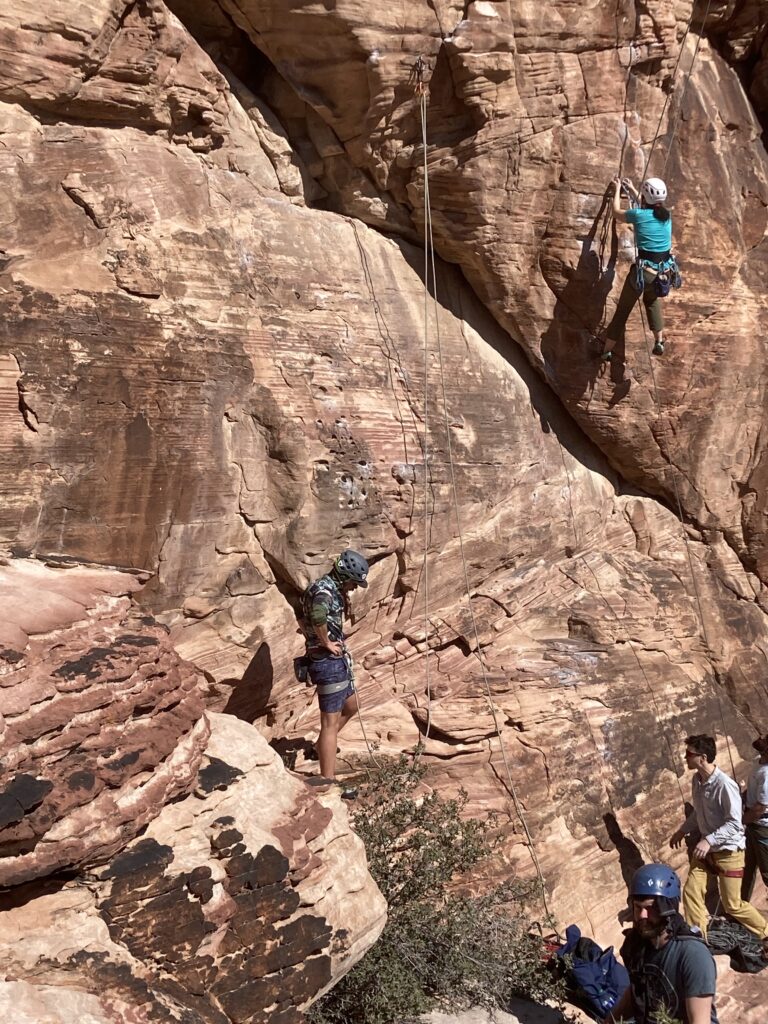
Regardless of what your personal slab crux seems to be, try these tips to level up your game. You can also check out our full collection of climbing techniques for more tips.
1. Palm press on slab
Slab is notorious for bad hands, but the angle of the rock can work in your favor. When there aren’t any obviously places to grab you can try a mantle-like technique known as a palm press.
Start by dropping your arm to your side and placing your palm fingers-down on the rock. When you press down, you will create tension that can allow you to shift holds or get a high foot that can push you up to the next move.
2. Maximize your foot surface area
Slab is about friction, and a huge part of the friction equation is surface area. Simply put, the more rubber you have on the rock, the more tension you can draw. The same theory is try for dihedral climbing.
There are limits to the logic — it would be better to have one toe on a really bomber nubbin than to shmear more of your foot on nothing. But if you’re finding yourself struggling for feet, try spreading them out a bit.
3. When slab climbing, put more weight on your feet
Like we said, the key to slab climbing is in the legs. Lots of beginners with over grip rock and try to rely too much on their arms. With climbing in general, your legs are usually doing the majority of the work. After all, your leg muscles are bigger and stronger than your arms so it makes sense to use them more.
If you find yourself struggling with slab, try moving your feet up, shifting your weight onto your high foot, and standing on it. Often times a high foot is what you need to unlock a cruxy move — especially on slab.
4. Keep your hips above your feet
Normally while climbing, you want to keep your hips and body as close to the wall as possible to avoid expending extra energy — slab climbing technique is different.
When your on a slab, you want your center of gravity and body weight to be directly over your feet. Since slab is angled, you need to be a little away from the wall in order for your body to be in the correct position.
Doing this is going to make your feet holds more positive. If you lean close to the wall, all your body weight will push at a slight angle and start to move your foot off the hold.
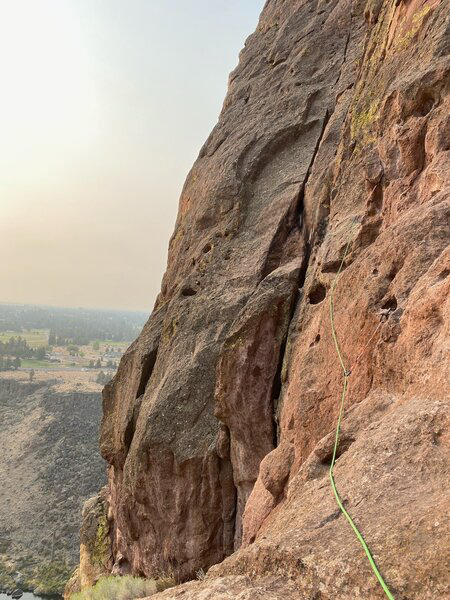
5. Matching
Often on slab feet are scarce and sometimes you need to move one foot onto a hold your other foot is occupying. This is referred to as a match. Matching is really common in slab because of the featureless faces you often encounter.
Start by placing the foot you want to match next to the foot that’s on the hold. Slowly twist the foot off while you twist the other on. Often times beginners will do what’s known as bunny hopping — jumping off and quickly putting the other foot down. This increases your chances for falling by removing a point of contact and reducing the chances of a solid foot placement.
6. Hone your head game
I try to stay away from ‘soft tips’ or things that aren’t about technique, but this is worth mentioning if you haven’t done much slab climbing before.
As I’ve mentioned, slab can be spooky. I often find it’s run out, wanders off route, and can surprise you at the top of routes when it’s too late to retreat without losing a draw. If this happens, don’t panic! Settle into your body, remember your technique, and trust the holds. The tension your body and the rubber on your shoe create is stronger than you think and can hold you in place even when feet feel none existent.
Epic slab climbs around the world
I’m sure someone will eventually jump in the comments and say ‘there’s is no such thing as an epic slab climb’. But I’ve done a couple I was actually quite stoked on.
This one is from the Lecco region in Italy, more specifically the Zucco dell’Angelone region at the Sperone dell astinenza wall. These climbs clocked in at 6c (about 5.11b in US grades) and were fairly short — only about 20 meters. What I loved was the pumpy starts with tiny feet and zero hands that eventually gave way to an extended side pull that provided some stability, but still forced you to be extra careful with your feet.
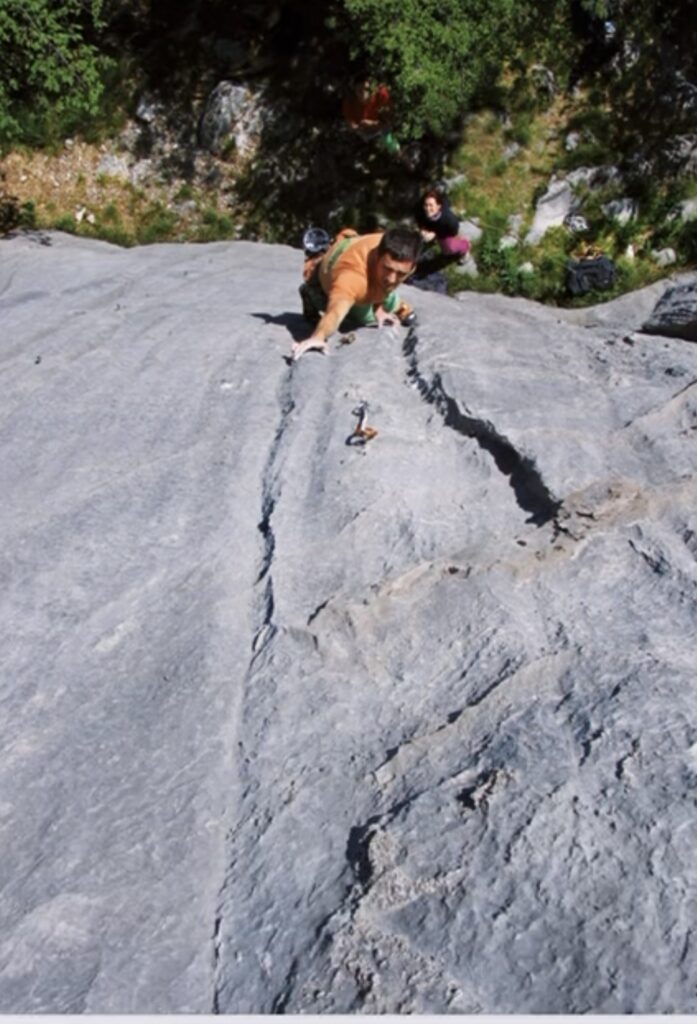
This picture makes it look overhung and that’s how I ended up here. We bushwacked throught the Italian alps only to arrive at a slab, so we just kind of went for it. And I’m glad we did because it turned out to be a pretty great time.
Slab climbing wrap-up
The world of slab can be scary, but it doesn’t have to be. With the right tips and techniques you can master slab climbing and be ready for whatever the rock throws at you. Stay safe out there and happy climbing!
